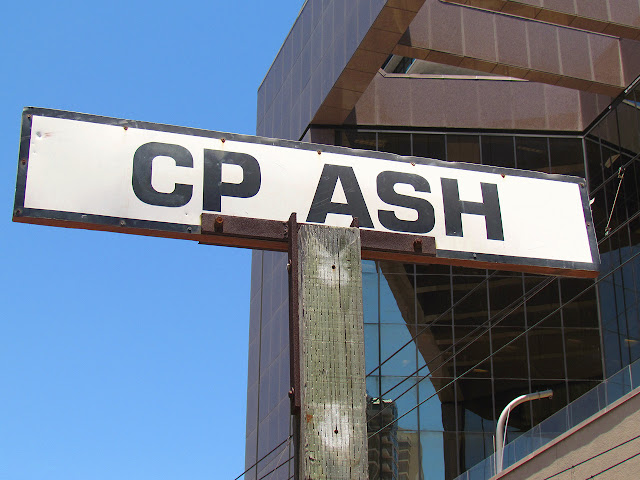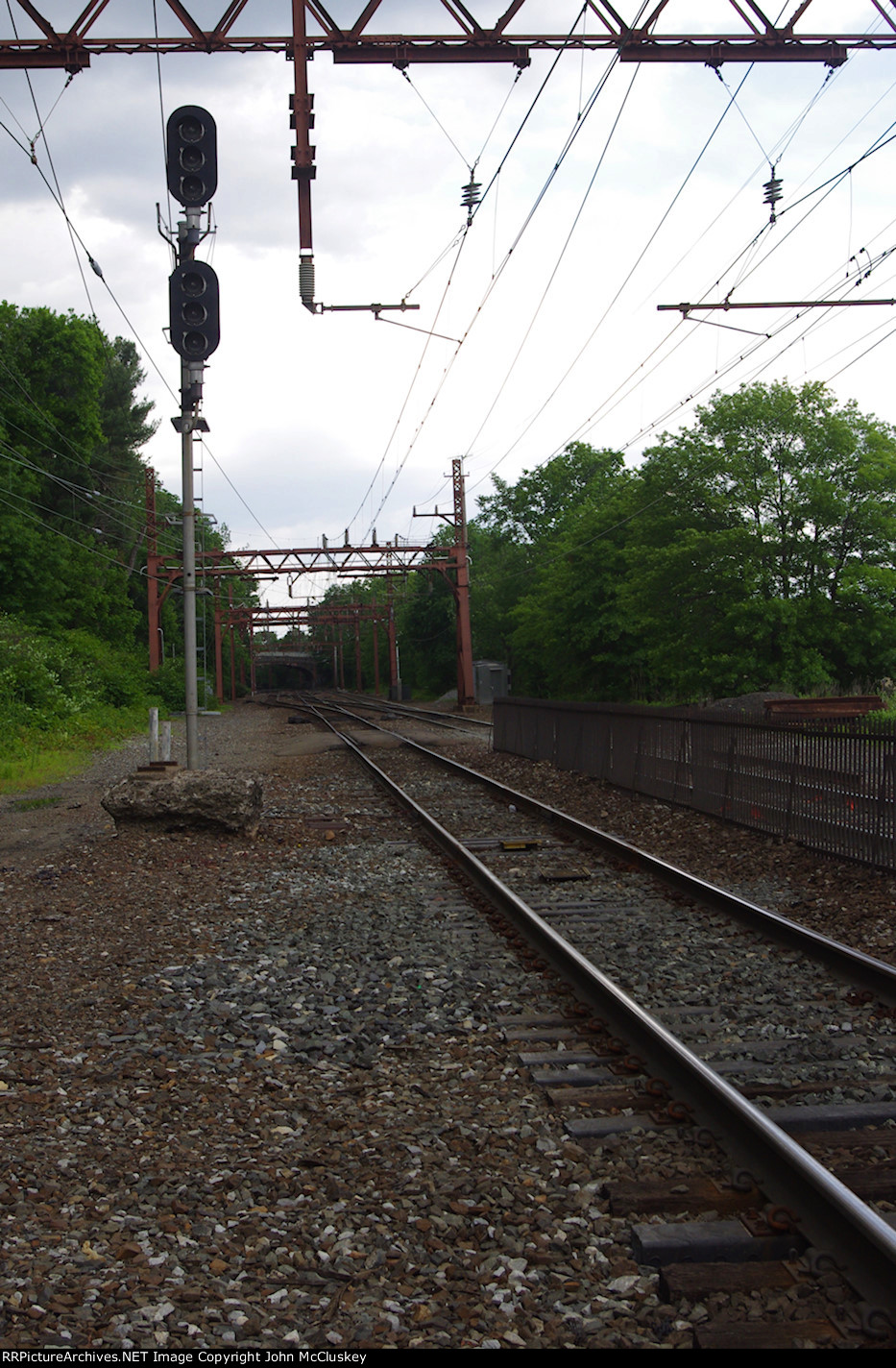Typically this blog tends to cover the last examples of one type of signal or tower or whatever. As I have traveled around a different, yet related question has come up. What is the last time some form of classic signaling or signaling equipment was installed new. Now, I know there are many situations where isolated examples of old tech are refurbished and thrown in as a like for like replacement due to a sudden failure. I am talking about identifying the last time someone opened a catalogue and picked out an older piece of equipment for a brand new project. This is interesting as it can create an awareness of when a certain technology or feature might ultimately age out.
Now, I don't have rock solid evidence for most of the following examples, but I am fairly confident in many of them. If any of you have better information please let me know and I'll make a followup post. I am also keeping this limited to North American, or possibly just United States railroads and not transit.
I am going to start off with candidates for the last new interlocking tower built. Yes in theory nothing would be stopping the construction of new towers in the future, but I think the likelihood of that is pretty low. If we limit ourselves to traditional style, stand alone interlocking towers, I would put my money on HAROLD tower in Sunnyside Queens. Built in 1986 and arguably still in service I am unaware of anything newer.
What is unless you count bridge cabins at which point we have the LIRR's LEAD movable bridge built in 1988 and the Henry Ford rail bridge, in LA which I have some evidence of local control, which was built in 1996. However, newest by a significant margin would be the St. Josephs Movable Bridge in St. Joseph Michigan, which was built between 2008 and 2012.

Of course if you're willing the bend the rules a bit, the PATH installed a new World Trade Center interlocking tower around 2003 and the Staten Island Railroad built their new TOWER A at St. George in 2004. Both are still technically railroads, although operated as rapid transit systems.
The next location wraps up three "lasts" up into one. This would be the last "new" installation of pneumatic point machines (not counting PATH), the last new installation TR type target signals and the last new installation of B&O CPL dwarfs. This would be the Chicago Union Station re-signaling project of 1992 that closed HARRISON ST tower on the south end with control transferred to LAKE ST tower on the north end. Although the CPL dwarfs were largely replaced by LED searchlights barely 10 years later, the pneumatic point machines are currently on their way out and the TR signals are going the way of the CPLs, I believe this project was the last significant use of all three.
Although the interlocking was always pneumatic, it's clear the 1992 project purchased all new parts and components, including pipelines. Like the super power steam of the 1940's, this air plant used the most modern techniques and materials.
The style TR signals appear to be made from some sort of corrosion resistant metal.
CPL dwarfs were also installed at CNW's LAKE ST as drop in semaphore replacements, but like I said that was not a new project and doesn't count. Speaking of B&O CPL,s when was the last time such signals were used in a new project? That would be the 1992/3 CTC projects on the CSX Metropolitan and Capitol subdivisions running out of Washington, DC. These projects, partly funded by the state to increase MARC service, were immediately before the decision was made to switch the former B&O lines to color light signaling, with Viaduct Jct in Cumberland, MD being one of the first examples. I have a 1992 photo of the new CPL's going up on the Met Sub and of course Greenbelt Station and its CPL signaled pocket tracks entered service in 1993.

How about PRR position lights? Well the last large project to use US&S PL-3 type position light lamps was the Secaucus Connection and Newark International Airport Stations on Amtrak's NEC in the 1999-2003 time frame. From then on the PL-3 was dropped from the catalogue and Amtrak went to Safetran position light assemblies, which continue to be installed new to this day.
Alright, let's go a bit more mundane and look at the GRS D Type color light signal employed by the Southern Railway amoung others. The latest major project I am aware of involving D Types was the NJT M&E re-signaling that wrapped up in the 1983/84 time frame. After that the market quickly went to Safetran CLS-10 and CLS-20 signals. I am pretty sure NJT was the last as the Southern had a number of split CLS-10 and CLS-20 mast locations on the Southern Main which would have been installed in the 84-86 timeline before left hand signals were allowed.
For US&S H series searchlights there are a number of good candidates such as the 1986 Amtrak Springfield Line re-signaling, however I think the last H-2/5 searchlight project was the ATSF San Bernardino Sub re-signaling which I think took place in the early to mid 1990's, judging by the construction of the aluminum signal structures.
I'm definitely going more out on a limb here because there is all sorts of stuff I can't properly investigate up in Canad, but the San Bernardino Sub US&S searchlights have a good claim as the last major install. Moving to the GRS Model SA searchlights I have even less evidence, however a solid floor is the Conrail re-signaling of CP-HARRIS with SA searchlights in 1992. If I had to choose something, I would probably choose the Guilford Rail System's Freight Main Line which appears to have gotten a post-1986 makeover, but I do not have high confidence, especially with Canada is taken into consideration.

If I had to speculate on the US&S N series color light signals and their associated "elephant ear" backings I would look to CSX in the late 1990's. Both CSX and the RF&P installed new N series signals in the 1986-1992 time frame with CSX's Abbeville Sub being a specific example from the 1980's. I really don't have enough information to go beyond there, however CSX did install some new elephant ear backings with US&S modular color lights on the A Line and on the old RF&P between RO and AF interlockings. Regrettable, the latter were removed after just a decade of service with the AF rebuild and VRE/Amtrak Alexandria capacity expansion project of the early 2000's.
Well this is what I've been able to come up with for now. If you have any requests for the "last new" install of something I'll give it a noodle, but be aware that I just don't have comprehensive information for the south, west and Canada.

















































